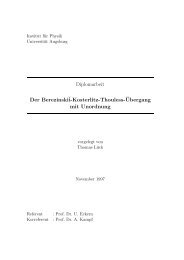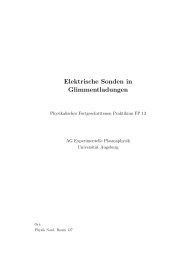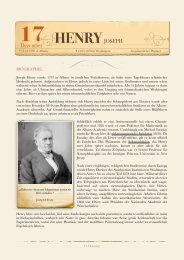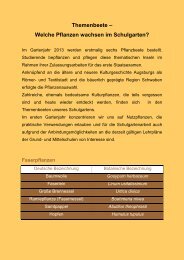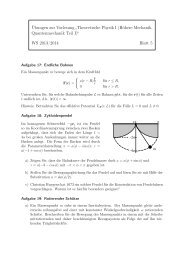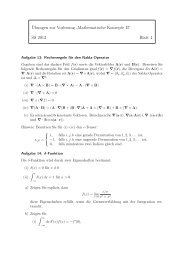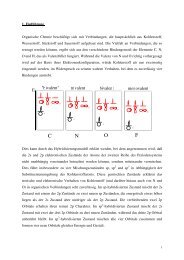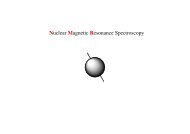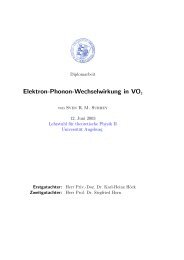Numerical Renormalization Group Calculations for Impurity ...
Numerical Renormalization Group Calculations for Impurity ...
Numerical Renormalization Group Calculations for Impurity ...
Create successful ePaper yourself
Turn your PDF publications into a flip-book with our unique Google optimized e-Paper software.
1<br />
1. OVERVIEW<br />
The thesis presents the results of the <strong>Numerical</strong> <strong>Renormalization</strong> <strong>Group</strong> (NRG)<br />
approach to three impurity models centered on the issues of impurity quantum<br />
phase transitions.<br />
We start from introducing general concepts of quantum phase transitions<br />
and address the relevant physical questions of the impurity models (Chapter 2).<br />
Chapter 3 consists of the technical details of the NRG, where we discuss how the<br />
NRG tracks down possible fixed points that govern the universal behavior of the<br />
system at low temperature.<br />
All the three impurity models studied show second order quantum phase transitions<br />
and quantum critical points but the levels of understanding of each case,<br />
particularly to the issues of quantum phase transitions, are quite different <strong>for</strong><br />
historical reasons. The soft-gap Anderson model (Withoff and Fradkin 1990) is<br />
one of the most well-established cases in the contexts of impurity quantum phase<br />
transitions and various analytic and numerical methods examined the physical<br />
properties of the quantum critical phase as well as the stable phases on both sides<br />
of the transition point. Our contribution is made to the <strong>for</strong>mer case by analyzing<br />
the NRG many-particle spectrum of critical fixed points, with which we can see<br />
how the impurity contribution of the thermodynamic quantities have fractional<br />
degrees of freedom of charge and spin.<br />
The quantum phase transition of the spin-boson model has a long history<br />
(Leggett, Chakravarty, Dorsey, Fisher, Garg and Zwerger 1987) but most of<br />
achievements were reached <strong>for</strong> the ohmic dissipation 1 . In the ohmic case, a delocalized<br />
and a localized phase are separated by a Kosterlitz-Thouless transition<br />
at the critical coupling α = 1. 2 The new development of the NRG treating the<br />
bosonic degrees of freedom broadened the range of the parameter space to include<br />
the sub-ohmic case and, as a result, second order phase transitions were found<br />
<strong>for</strong> the bath exponent 0 < s < 1 (Bulla, Tong and Vojta 2003) as we discuss in<br />
Chapter 5.<br />
The bosonic single-impurity Anderson model (bsiAm) is a very new model and<br />
there is no precedent work on it. Nonetheless, the NRG approach to the bsiAm<br />
shows that the zero temperature phase diagrams are full of interesting physics<br />
such as the enhancement or the suppression of the Bose-Einstein condensation by<br />
the impurity and the existence of quantum critical points. The works presented<br />
1 The s = 1 case where s is the exponent of the bath spectral function.<br />
2 <strong>for</strong> the unbiased case of ɛ = 0.



